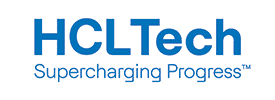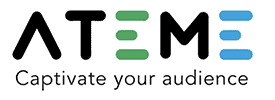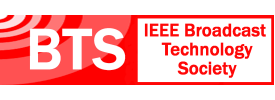- About
- Members
- Sponsors
- Subcommittees
- Technical Documents
- News
- Events
- Spotlight ATSC 3.0
- Contact Us
- Member Login
- Member Meetings
- Advanced Search
Search Site
Member Links
- About
- Members
- Sponsors
- Subcommittees
- Technical Documents
- News
- Events
- Spotlight ATSC 3.0
- Contact Us
- Member Login
- Member Meetings
- Advanced Search
More ATSC 3.0 Standards Progress!
Posted on May 3, 2016 in ATSC News
The much-anticipated A/342 audio standard for ATSC 3.0 is now officially a Candidate Standard. Members of the TG3 Technology Group voted May 2 to elevate both the AC-4 and MPEG-H AA audio systems to Candidate Standard status.
Someone You Should Know: Dr. Ryan (Hakju) Lee
Posted on May 3, 2016 in ATSC News
Dr. Ryan (Hakju) Lee, principal engineer at Samsung Electronics, has been involved with ATSC since 2006, initially working on the ATSC mobile TV standard, in parallel with his work on the DVB second-generation standard.
AND NOW A WORD FROM OUR SPONSOR
Posted on May 3, 2016 in ATSC News
ATSC 2016 sponsor Cox Media Group (CMG) is an integrated broadcasting, publishing, direct marketing and digital media company whose operations include 14 broadcast television stations and one local cable channel, 60 radio stations, six daily newspapers and more than a dozen non-daily publications, as well as more than 100 digital services.
ATSC 2016 Broadcast Television Conference To Detail Station Rollout And ‘Countdown To Launch’ Of New Flexible, Adaptable Next-Generation TV Standard
Posted on April 26, 2016 in Press Releases
May 10-11 Events Bring Together Technical Experts, Station Management, Policy Experts and Government Officials WASHINGTON, April 26, 2016 –Heralding the “Countdown to Launch” of the ATSC 3.0 next-generation television broadcast standard, the Advanced Television Systems Committee (ATSC) will bring together hundreds of engineers, broadcasters, and policymakers when the annual ATSC Broadcast Television Conference convenes in the […]
ATSC 3.0 DEMONSTRATIONS AT NAB SHOW TO SHOWCASE FLEXIBLE, ADAPTABLE STANDARD
Posted on April 7, 2016 in Press Releases
Live ATSC 3.0 Transmissions, Consumer-Friendly Features of New Standard Highlighted in Las Vegas Convention Center South Hall Exhibits WASHINGTON, April 7, 2016 – Viewers, broadcasters and manufacturers all will benefit from ATSC 3.0, the new television standard developed by the Advanced Television Systems Committee (ATSC) . The ATSC 3.0 Consumer Experience and the Broadcast Pavilion […]
President’s Memo
Posted on April 4, 2016 in ATSC News
As they sharpen those bold strategies, it’s important for senior broadcasting executives to understand that the major elements of the ATSC 3.0 suite of standards are essentially completed.
ATSC 3.0 Demonstrations at NAB Show to Showcase Flexible, Adaptable Standard
Posted on April 4, 2016 in ATSC News
Viewers, broadcasters and manufacturers all wiil benefit from ATSC 3.0, and two large exhibits at the April NAB Show will highlight the many new capabilities of the flexible standard and how it will respond to different demands.
ATSC 3.0 Fest II Takes Maryland by Storm
Posted on April 4, 2016 in ATSC News
Building on the success of the first ATSC 3.0 Plug Fest in Shanghai last fall, a second round of testingwas held March 2-25 in Hunt Valley, Maryland.
First Single Frequency Network ATSC 3.0 Experimental Broadcasts Under Way
Posted on April 4, 2016 in ATSC News
The first-ever ATSC 3.0 experimental broadcasts using Single Frequency Networks (SFNs) under way in Washington and Baltimore are demonstrating how SFNs can help assure high quality of service throughout a broadcaster’s service area with the next-generation ATSC 3.0 standard.
ATSC TG3 Chairman Chernock to be Honored at NAB Show
Posted on April 4, 2016 in ATSC News
Congratulations are in order for one of our own! ATSC TG3 Chairman Dr. Richard Chernock will receive the 2016 NAB Television Engineering Achievement Award at this month’s NAB Show in Las Vegas.
News Categories
News Archives
Subscribe
Subscribe to The Standard, our monthly newsletter. Learn More
Join ATSC
ATSC is a membership organization with both voting and observer categories. Voting members include corporations, nonprofit organizations, and government entities, and they participate actively in the work of ATSC. Observers are individuals or entities not eligible to be a voting member.
Subscribe to our Newsletter
Subscribe to The Standard, our monthly newsletter, to stay up-to-date with ATSC news and events around the world.
Site Links
Contact Us
ATSC
1300 I Street NW, Suite 400E
Washington, DC 20005 USA
Do you have questions about ATSC?
About ATSC
ATSC, the Broadcast Standards Association, is an international, non-profit organization developing voluntary standards and recommended practices for digital terrestrial broadcasting. Serving as an essential force in the broadcasting industry, ATSC guides the seamless integration of broadcast and telecom standards to drive the industry forward. Currently, the ATSC 3.0 Standard is providing the best possible solution for expanding the potential of the broadcast spectrum beyond its traditional application to meet changing needs. From conventional television to innovative digital data services, ATSC has one clear goal: to empower the broadcasting ecosystem like never before.
© 2025 ATSC





































